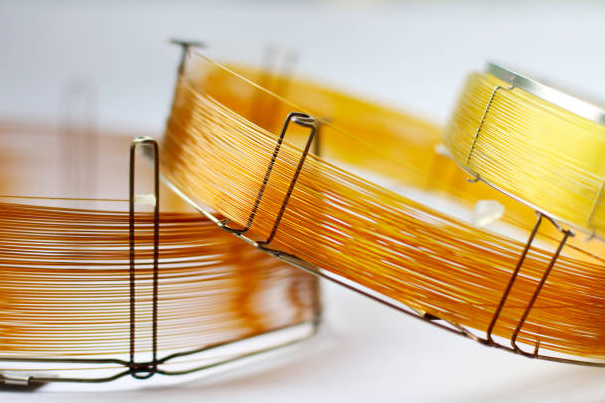GC Best Practices to Optimize Performance and Reduce Replacement Costs
Gas chromatography (GC) columns are essential components in any analytical laboratory performing complex separations. These columns, often made of fused silica or stainless steel and coated with a stationary phase, are also among the more costly consumables. While degradation over time is inevitable, proper care and operational practices can significantly extend a GC column’s lifespan, as well as result in improved resolution, increased sensitivity, and lower operational costs.
Below are five key ways to extend the life of your GC columns, focusing on best practices for GC column maintenance, sample handling, and instrument care. Implementing these techniques will help scientists, analysts, and laboratory technicians protect their investment while maintaining optimal chromatographic performance.
1. Use High-Purity Carrier Gas with Effective Gas Filters
Impurities in carrier gas—such as oxygen, moisture, and hydrocarbons—are leading causes of stationary phase degradation and column damage. One of the most effective strategies to prolong GC column life is ensuring the use of ultra-high-purity carrier gas, typically 99.999% (5.0 grade) or higher. Impurities such as oxygen, water vapor, and hydrocarbons can degrade the stationary phase and reduce column efficiency.
Recommended Practice:
- Install gas purification systems (oxygen, moisture, and hydrocarbon traps) close to the GC inlet.
- Regularly monitor and replace filters based on system usage.
Benefit: Reduces oxidative degradation, column bleed, and baseline noise.
2. Improve Sample Preparation and Protect the Column Inlet
Poor sample preparation is a common cause of GC column fouling. Non-volatile residues and particulates from unfiltered or contaminated samples can accumulate in the column inlet, shortening column life and impairing peak shape.
Recommended Practice:
- Use filtration, SPE (solid-phase extraction), or derivatization to remove sample contaminants.
- Install a guard column or retention gap to shield the analytical column from inlet contamination.
Benefit: Prevents irreversible damage to the column’s stationary phase.
3. Optimize Injection Parameters and Avoid Overloading
Injection techniques and volume play a critical role in column longevity. Excessive sample injection volumes or highly concentrated analytes can overload the GC column, causing peak distortion, retention time shifts, and eventual stationary phase damage.
Recommended Practice:
- Use appropriate injection modes (split/splitless, PTV, on-column) for your sample type.
- Calibrate injection volumes based on the column’s capacity and analytical goals.
- Regularly inspect and replace GC inlet liners and septa to minimize contamination.
Benefit: Maintains column selectivity and improves method reproducibility.
4. Maintain Proper GC Oven Temperature Programming
Exceeding a column’s maximum temperature rating can cause thermal breakdown of the stationary phase, leading to increased bleed and deteriorating performance. Thermal stress also shortens column life over time.
Recommended Practice:
- Stay at least 20 °C below the column’s maximum temperature limit.
- Use moderate temperature ramp rates and hold times. Avoid rapid temperature ramp rates that exceed column design specifications.
- Implement post-run cool-down periods to ambient temperature before shutting off carrier gas.
Benefit: Extends column lifespan and reduces background noise.
5. Regular maintenance of the Inlet, Septa, and Detector Components
Inlet and detector systems can accumulate contamination over time, leading to backflash, peak broadening, or signal instability. Routine preventive maintenance of the GC inlet system and detector is essential to avoid these problems —all of which can negatively affect GC column performance and indirectly reduce column life by causing fouling near the head of the column.
Recommended Practice:
- Clean and/or replace septa, O-rings, and liners on a regular schedule. Clean detector surfaces (e.g., FID jets) to prevent signal instability.
- Use an electronic leak detector to identify and fix leaks in gas lines and fittings.
- Use a maintenance log to track part replacements.
Benefit: Preserves column integrity and ensures reliable chromatographic results.
Conclusion: Maximize the Lifespan of Your GC Column
While each GC system and application has unique demands, adhering to a few foundational practices for GC column maintenance will ensure greater column reliability and consistent performance across runs. With these five best practices, laboratories can significantly extend the life of their GC columns, reduce variability in results, and minimize downtime and costs associated with premature column replacement. Investing time in preventive care—from gas purification to injection optimization—ensures consistent, high-quality chromatographic data across applications in environmental testing, pharmaceutical analysis, food safety, and more.
For laboratories using capillary columns frequently, incorporating a regular GC maintenance schedule into your workflow is key to maintaining data integrity and controlling operating costs.
Do you need service, preventive maintenance, or help troubleshooting your GC performance? Keep your lab running smoothly with GenTech’s service options! Learn more!
Sources:
(1) Agilent | A Beginner’s Guide to your GC Columns: Installation, Care, and Maintenance
(2) Restek | Guard Columns and Retention Gaps (Part 1) & (Part 2)
(3) Thermo Fisher | GC Troubleshooting Guide
(4) Sigma-Aldrich | GC Column Selection Guide
(5) PerkinElmer | Gas Chromatography Maintenance Guidelines






